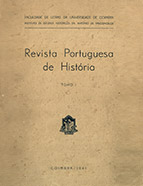

................................
In its first decade of existence, RPH didn't manage to become a yearbook, "with 300 to 400 pages", as its founders had intended: tome III was published in 1947. The section on national and foreign historiography was, however, very lengthy at around 132 pages. French and English historians continued to collaborate and articles were published on historical studies published in Germany and the United States of America. The new collaborations related to the years 1939 to 1944 and fell into the following fields: general and political history, religious history, history of culture, history of thought, economic and social history, history of law and institutions, theory of history, history of historiography, sources and auxiliary sciences of history. Portuguese historians who read the first three volumes of the RPH thus had the opportunity to acquaint themselves with and follow "the direction" of foreign historiographical production, both European and American, across the main fields of history. From 1949 onwards, the journal stopped providing this wide-ranging information and closed itself off to the outside world, probably due to ideological constraints.
An understanding of the historiographical orientations of the RPH relies primarily on an analysis of the texts published within it. The articles published in the first volume dealt with themes relating to the Reconquest period, with the exception of a text by Damião Peres on the Voyages of Diogo Cão. In terms of chronology, the first volume of the RPH defined what would become one of its hallmarks until the 70s: the study of the Middle Ages, an area of speciality for most of the members of the Institute of Historical Studies and, in particular, Torquato de Sousa Soares, the driving force behind the RPH until the 70s.
This work is financed by national funds through FCT - Foundation for Science and Technology, I.P, in the scope of the projects UIDB/04311/2020 and UIDP/04311/2020.
